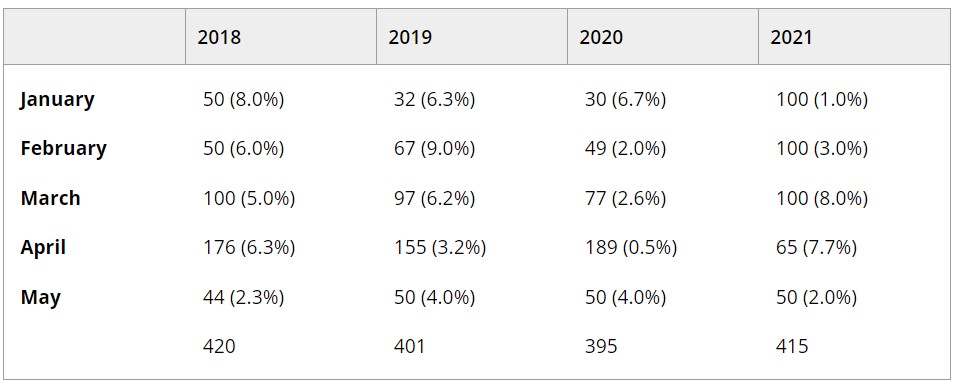The Blood services wider contribution to public health? session included the following presentations:
1. Mike Busch: mportant role for biorepositories in global surveillance and epidemiological studies
2. Khoa Manh Dinh: The effect of COVID-19 interventions on virus nasal carriage among Danish blood donors
3. Bertram Kjerulff: Influence of sex, age, BMI, and smoking on 47 circulating inflammatory and vascular stress biomarkers in 9,876 healthy individuals – Results from the Danish Blood Donor Study
4. Mars Stone: Development of a Nationwide Repeat Blood Donor Cohort to Monitor SARS-CoV-2 Serosurveillance and Population Immunity
5. Mart Janssen: Generating synthetic blood transfusion data for haemoglobin deferral prediction
MODERATORS: Antoine Lewin, Ole Birger Pedersen
After the presentation, there was a questions and answers session, which is also included in the recording.
Abstract
The effect of COVID-19 interventions on virus nasal carriage among Danish blood donors
K Dinh1, L Erikstrup2, O Pedersen3, C Erikstrup1
1Department of Clinical Immunology, 2Department of Clinical Microbiology, Aarhus University Hospital, Aarhus, 3Department of Clinical Immunology, Zealand University Hospital, Køge, Denmark
Background: The COVID-19 outbreak was unprecedented in scale and many questions regarding virus transmission and prevalence needed answering. In order to reduce the infection rate, health authorities introduced several interventions to restrict the pandemic. Two partial lock-downs of Denmark were initiated March 11 and December 09, 2020. COVID-19 interventions such as the closing of schools, public institutions and prohibition of group gatherings were implemented, only public employees with essential work were allowed to work and many private businesses were closed. The society was gradually reopened from April 15, 2020 and 08 February, 2021. The interventions against COVID-19 may play an important role in the transmission of not only severe acute respiratory syndrome coronavirus 2 (SARS-CoV-2) but also other common respiratory viruses and inadvertently lower the prevalence of these. More knowledge on this matter could impact future strategies to reduce the burden of respiratory viruses on morbidity, sick leave and health care expenses.
Aims: We examined the prevalence of 24 virus sequences of common respiratory tract viruses in samples from the nostrils among healthy asymptomatic blood donors before and after the partial lock-downs in Denmark.
Methods: We analysed nasal swabs collected in 2018–2021 from 1631 participants (Table 1) in the Danish Blood Donor Staphylococcus aureus Study for 11 common respiratory tract viruses and subtypes using advanced PCR (Fluidigm Biomark HD, Integrated Fluidic Circuits). Further samples from 1369 participants are being analysed. We compared the prevalence of each virus among asymptomatic donors reporting for blood donation during the partial lock-down interventions and equivalent calendar months in the years before the lock-down using logistic regression adjusted for sex and age. Results are presented as odds ratio (OR) with 95% confidence interval (CI).
PA24-L02 Table 1. Overview of number of samples analysed and positive-percentage of human rhinovirus

Results: The sex distribution in this study population was 56.7% male and the mean age was 41.4 years. In all periods, Human Rhinoviruses 1/2 (RV) were the viruses most frequently detected (4.4%) followed by Human Bocavirus (1.2%), Human Respiratory Syncytial Virus A/B (0.3%), Adenovirus 1/2 (0.2%), and Human Parainfluenza 1 (0.2%). We observed a lower odds of RV in April 2020 compared with April 2018, 2019 and 2021 (OR = 0.20, CI: 0.03–0.66). Similarly, the odds of RV in January 2021 was lower than in equivalent months in 2018–2020 (OR = 0.13, CI: 0.01–0.71). After partial or full re-opening, however, the odds of RV in May 2020 did not differ from equivalent months in other years (OR = 1.49, CI: 0.20–8.12). Adjustment did not change effect sizes. Of note, SARS-CoV-2 was not detected in any sample.
Summary/Conclusions: RV were the main common respiratory tract viruses detected in the nose among asymptomatic blood donors. Our results suggest that the effect of COVID-19 interventions after partial-lock-downs lowered the incidence of RV but the effect ceased quickly after reopening was initiated. No SARS-CoV-2 was detected which indicate sufficient deferral measures against COVID-19 in the blood centres.















